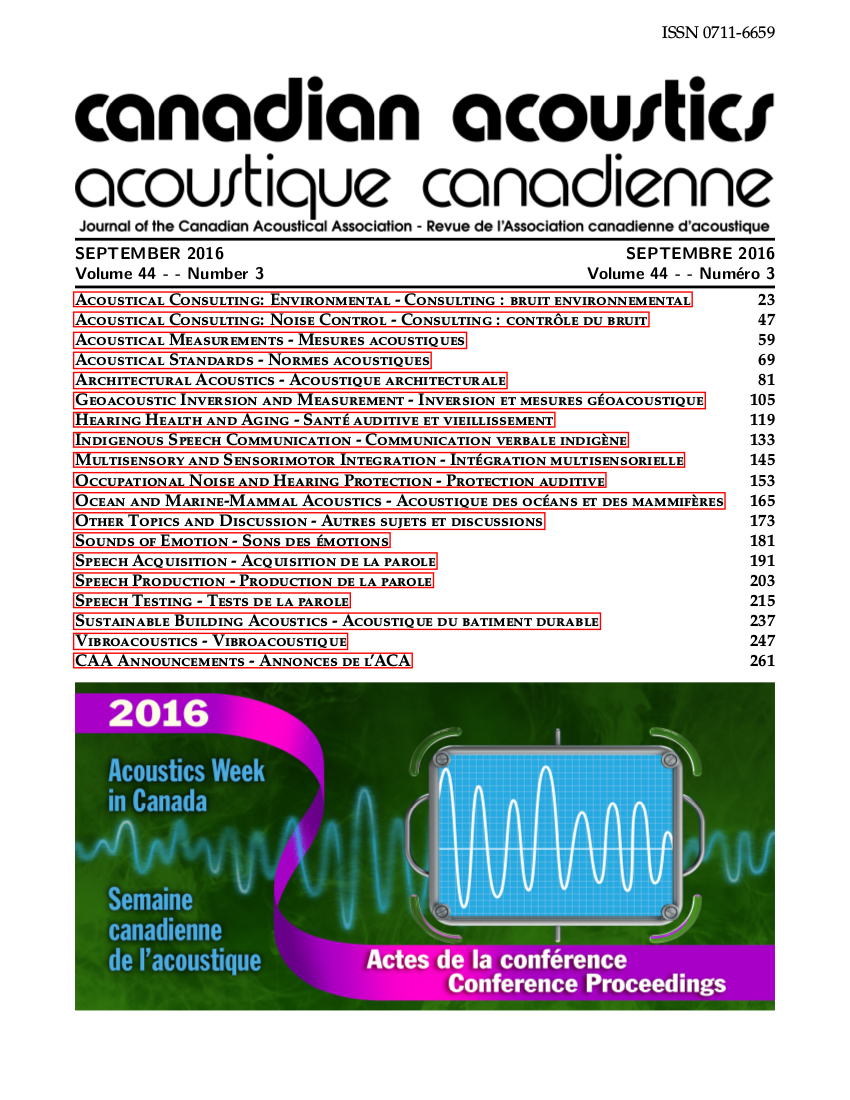Acoustical properties of homogeneous planar surfaces in room acoustics: A theoretical review
Résumé
This work reviews the fundamental boundary conditions used in room acoustics from a theoretical perspective. In particular, it is assumed that sound propagates in air as plane waves and the boundaries are planar walls. Moreover, the walls are assumed to be infinite in lateral extent and have uniform properties along their surface. These two conditions ensure that sound waves are reflected wholly specularly, as opposed to being scattered as well; the assumption of infinite lateral extent avoids scattering from the edges of the walls, and the assumption of uniform properties avoids scattered radiation caused by the inhomogeneity of the wall. Parameters used in describing the acoustical properties of the walls are introduced and, using the wave equation, expressions are derived for them in terms of the wall impedance. Theoretical relations between the parameters are then discussed based on (i) physical restrictions such as energy conservation and the causality condition and (ii) simplifying assumptions used in room acoustics such as local reaction of surfaces and the minimum-phase condition. Finally, some practical aspects of these theoretical relations are discussed using simple examples.Fichiers supplémentaires
Publié-e
Comment citer
Numéro
Rubrique
Licence
Author Licensing Addendum
This Licensing Addendum ("Addendum") is entered into between the undersigned Author(s) and Canadian Acoustics journal published by the Canadian Acoustical Association (hereinafter referred to as the "Publisher"). The Author(s) and the Publisher agree as follows:
-
Retained Rights: The Author(s) retain(s) the following rights:
- The right to reproduce, distribute, and publicly display the Work on the Author's personal website or the website of the Author's institution.
- The right to use the Work in the Author's teaching activities and presentations.
- The right to include the Work in a compilation for the Author's personal use, not for sale.
-
Grant of License: The Author(s) grant(s) to the Publisher a worldwide exclusive license to publish, reproduce, distribute, and display the Work in Canadian Acoustics and any other formats and media deemed appropriate by the Publisher.
-
Attribution: The Publisher agrees to include proper attribution to the Author(s) in all publications and reproductions of the Work.
-
No Conflict: This Addendum is intended to be in harmony with, and not in conflict with, the terms and conditions of the original agreement entered into between the Author(s) and the Publisher.
-
Copyright Clause: Copyright on articles is held by the Author(s). The corresponding Author has the right to grant on behalf of all Authors and does grant on behalf of all Authors, a worldwide exclusive license to the Publisher and its licensees in perpetuity, in all forms, formats, and media (whether known now or created in the future), including but not limited to the rights to publish, reproduce, distribute, display, store, translate, create adaptations, reprints, include within collections, and create summaries, extracts, and/or abstracts of the Contribution.


